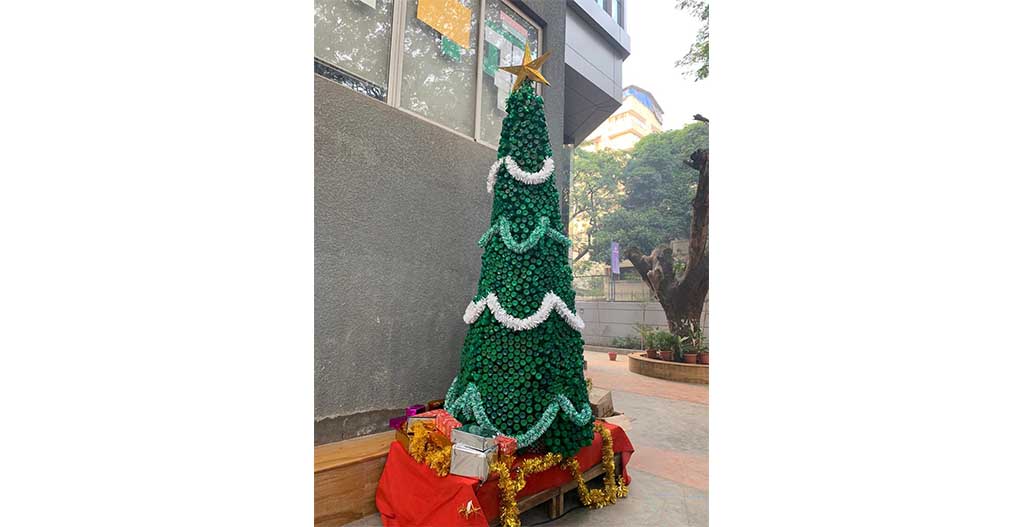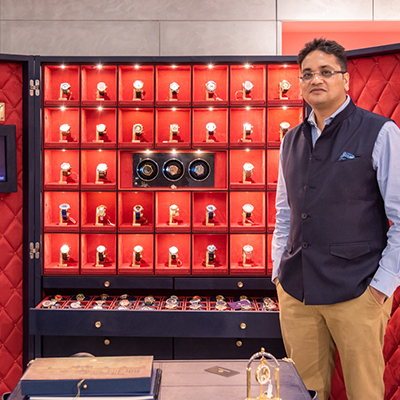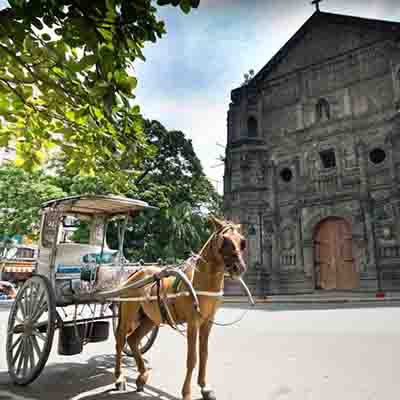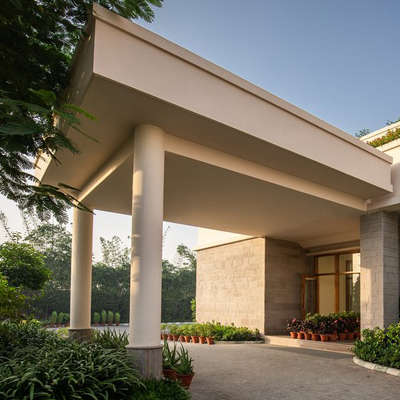
Art is not bound by the use of expensive materials, squeaky clean canvases or defined structure. Incorporating some of the discarded and unseemingly beautiful material into a magnificent artwork is truly fulfilling to me as an artist. Upcycled art is a beacon of sustainability that should be tirelessly encouraged especially in these times when climate change has become a reality which we can’t deny. Such sustainable art ensures that toxic paint from various art works doesn’t end up in water bodies,
For me, it all started at the beginning of the 21st century at a gallery in Bandra. At the Celebrate Bandra festival by the Times group, I was the Festival Director of the Art section. I realised that in order to grab more eyeballs, art needs to break the shackles of the gallery and stand tall at a public place, closer to the people.

With my resolve to create a public art installation, I realised the environmental factors that were at play. The sea, climate, security needed to be considered at that time. Therefore my team decided to use recycled material and turn it into a sprawling artwork.
Our team resonated with the idea of creating windmills by using discarded newspapers. The artwork being a public art with a message gained public applause and was seen as a pioneer for upcycled and sustainable art. Further, we created a huge installation which was a tree-shaped bin made by using phone bills and it was unbelievable to come across that enormous amount of waste paper. Through this, we wanted the common man to move to online/electronic phone bills and say no to hard copies of their phone bills in order to save paper and thereby save trees. We asked the passersby to pick up the bills, crush them and throw them inside the tree-shaped bin. It gained a lot of attention from the public and that truly felt like an achievement.
Roadblocks in the journey
It is not a cakewalk, to create such art installations as a colossal amount of immeasurable challenges come to our journey of creating treasure from waste. While selecting the materials that we use for the artwork, we need to be careful bout the tenacity and resilience of those materials owing to the climatic conditions of a particular city. The materials also need to be able to catch the eye of a passerby and not look unpleasant.
Another aspect is the deciding factor of what we want to create and using what! More often than seldom, it is a dexterous task to come to a consensus with the team on deciding the theme of the artwork. We strive to create the best out of waste, but in order to create the best, we should be able to imagine an artwork emerging from the waste material. These steps that we take from ideation to execution, need to be taken in a limited amount of time and need to be surefire.
The visual aspect
Challenges while preparing the upcycled material
- Environment– While I was working on creating the windmills, we face the challenge of creating a climate-friendly installation as it was essentially made using newspapers which had the risk of getting torn apart, getting wet in the rain and etc.
- Cleaning– A few years back, when I received the Limca book of World Record, it was for an art installation titled ‘Bottle Fall’, which was made using 40,000 bottles. It was an 11 storey art installation. The monumental efforts of my entire team went into collecting these many bottles. This wasn’t a walk in the park. We had to gather 40,000 bottles, and clean them in order to create an installation that wasn’t unpleasant. We took the help of some ragpickers and trained them for hygienic detailing.
- Vandalism– Whenever I have created a public art installation and it has reached its final stage, I have a recurring fear- the fear of vandalism. It is a well-known fact that monuments and artworks get vandalised and destroyed by miscreants. Therefore, while creating the COVID Warrior memorial recently, I added some elements to the artwork’s design, in order to safeguard the structure from vandalism.
- Approvals– It is most important to get approvals from local civic bodies before setting up an installation. This is an arduous task as there are many factors that come into play here. It is coupled y red-tapism and unnecessary negativity that we might across. Even after getting approval from the civic bodies, sometimes the people living in a particular area, object to the installation and complain about disturbances. It is essential to pacify such people in order for the artwork to be created with utmost dedication and mindfulness.
- Minimise wastage- When I received a Guinness World Award for creating the largest installation with cricket bats in 2019, for which we used nearly 1,300 cricket bats, I made sure not to drill holes in the bats so that at the end of the event, we could donate those bats to a cricket academy or those who need it.
- The message- While I know what my artwork is trying to say through its beauty and various elements, but would the common man be able to perceive what my artwork is trying to say? This is a question one should ask, before completing the installation. The message should be loud and clear, and shouldn’t get lost in the artwork.
Art has the power to shake the conscience of the viewer without using words. The power of art today is far-reaching, as art has graduated through evolved media, digital art, street art, art as therapy etc. Various non-verbal, minimalistic, though-provoking non-verbal advertisements that we come across today, are a form of art that conveys strong messages.
There are many challenges that await you and just take your pulse away. All the crises that await you every day, the bad weather, the hard choices, and the criticism all add up to something. An artwork is like a stage performance where the audience doesn’t know about the crisis that went on in the green room.
Backstage chaos is gruelling but also truly rewarding. I believe the artwork shines brighter when there have been such crises behind it, the thrill of creating a masterpiece is much more.










